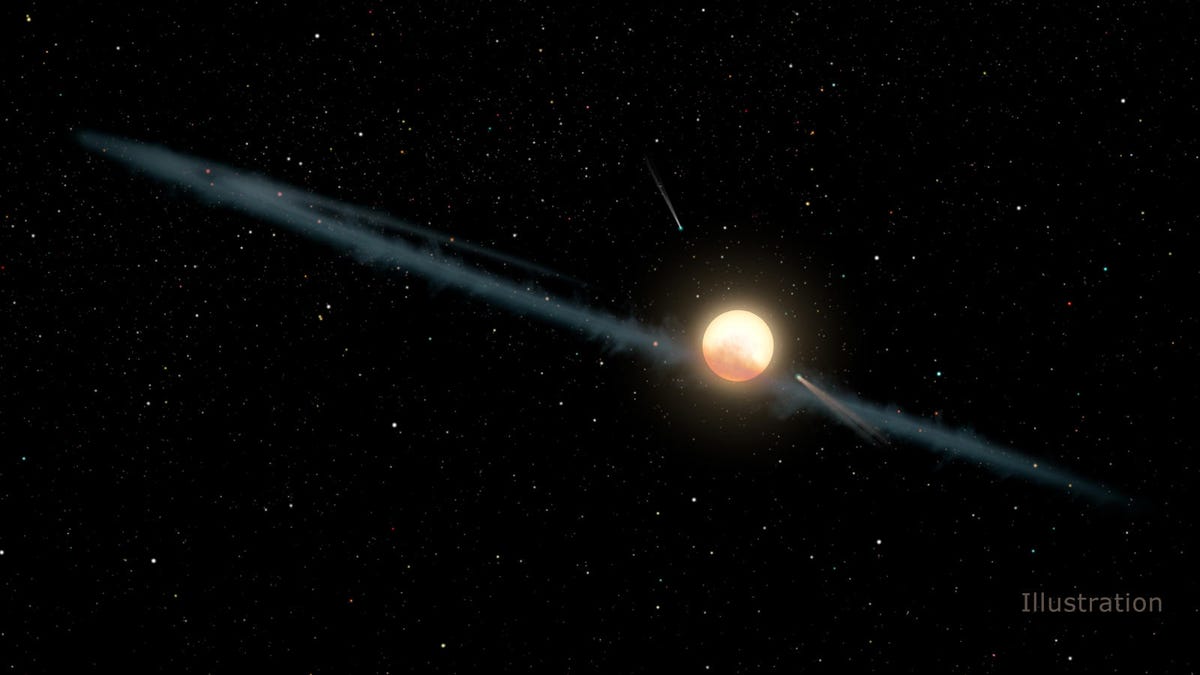Sorry, aliens not causing 'Tabby's Star' weirdness
KIC 8462852, the strangest star in the galaxy, dims and brightens in a way that could be explained by an advanced civilization. But the star's namesake has nixed that idea.

The idea that a so-called "Tabby's Star" could be orbited by huge structures created by an advanced alien civilization has been essentially ruled out by "Tabby" herself.
Tabetha Boyajian led the crowdsourced citizen scientist team that first identified the star officially known as KIC 8462852 or Boyajian's Star in 2015. The story of the mysterious star went viral thanks to its unique and weird habit of dimming and brightening without any obvious pattern, leading some to suggest alien megastructures straight out of science fiction as a possible explanation.
But Dyson Swarms, Alderson disks and other imaginary alien engineering feats were never the most likely explanation for what Boyajian and a team of citizen scientists discovered over two years ago. Now, Boyajian tells me that thanks in part to a crowdfunded observation run that watched KIC 8462852 for almost two years, we can finally rule out alien megastructures as a possible explanation for its weird behavior.
"From what we can assume, a megastructure would be a solid body, not capable of producing the color dependence we observe," she said via email.
Boyajian is the lead author on a new paper published Wednesday in Astrophysical Journal Letters that explains something much less solid is the most likely explanation for the star's strange dips in brightness, including the latest such bit of stellar weirdness that started in May of 2017.
"We were hoping that once we finally caught a dip happening in real time we could see if the dips were the same depth at all wavelengths. If they were nearly the same, this would suggest that the cause was something opaque, like an orbiting disk, planet, or star, or even large structures in space," Penn State astrophysics professor Jason Wright said in a statement. Wright is a co-author of the new paper and on earlier papers suggesting megastructures might explain the dips.
Instead, all the observations of the star since October 2015 point to something much less exotic than alien architecture blocking out KIC 8462852's light in unpredictable ways.
"Dust is the most likely the reason why the star's light appears to dim and brighten," Boyajian said in a statement.
While cosmic dust may seem a lot less exciting than finding a super advanced race of aliens, astronomer Stuart Clark -- who was not involved in the study of the star -- says KIC 8462852 had been an important practice run in the search for E.T.
"This is not really sad news," he told me. "I think the most likely way we will find aliens is by some unexpected data in some random observation that we cannot explain with natural causes. We'll stumble across it, just like we stumbled across the signal from Tabby's star."
This is far from the final word on the mysterious star, however. Wright says while there's no longer any reason to think alien structures surround the star, other explanations like a swarm of exocomets or a black hole disk are still on the list of feasible explanations.
With the door apparently shut on the idea of aliens orbiting her namesake star, I asked Boyajian if she thought all the attention the possibility (no matter how minute) of finding an alien civilization drew was frustrating or a net good.
"The attention was a bit overwhelming at times," she told me. "Considering both points you make, I would settle on a 'net good' -- the clickbait has helped educate and inspire many people."
There is one possibility, though, that squares with both the new analysis showing dust as the best explanation and the possibility that there were once alien megastructures around Boyajian's Star: what if just such massive structures in a corner of the galaxy far, far away were destroyed a long time ago leaving only the dust and debris we see now?
Cue the clickbait...
First published Jan. 3, 6 a.m. PT.
Update, 11:40 a.m. PT: Adds comment from astronomer Stuart Clark.
Crowd Control: A crowdsourced science fiction novel written by CNET readers.
Solving for XX: The tech industry seeks to overcome outdated ideas about "women in tech."

